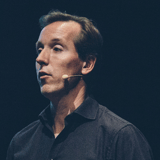Summary
In this session, several UX professionals including JD and others share insights on navigating communication challenges in complex enterprise environments. They emphasize the importance of gaining stakeholder buy-in early and involving teams collaboratively to foster ownership and alignment, rather than solely relying on research data. JD explains the rigorous approach to measuring UX ROI through multiple metrics like NPS, SUS, and task success rates, while acknowledging the slow and patient nature of transformation. ADP's three-year UX transformation journey highlights the need for perseverance, team cheerleading, and periodic regrouping to maintain momentum. The speakers also explore how UX practitioners can extend their skills to social impact work, noting that opportunities often arise unexpectedly and require proactive outreach, patience, and adapting design thinking to NGO contexts. They suggest strategies like storyboarding ideal experiences to keep teams motivated and celebrate small wins to sustain resilience. The conversation closes with reflections on lessons learned, such as the value of patience, continuous improvement, personalized communication to stakeholders, and balancing passion with digestible messaging.
Key Insights
-
•
Gaining stakeholder buy-in upfront is essential to prevent research being ignored.
-
•
Collaborative involvement increases team ownership and reduces resistance.
-
•
Successful communication is about ongoing engagement, not just presenting static artifacts.
-
•
Enterprise UX transformations require patience and fortitude, often taking years.
-
•
Mapping both current and ideal user journeys supports motivation and clarity.
-
•
Measuring UX ROI involves multiple quantitative metrics and statistical significance over time.
-
•
UX skillsets provide immediate value in social impact settings, unlike some technical roles.
-
•
Social impact opportunities often come through personal initiative and serendipity.
-
•
Sustaining energy in long projects can be supported by revisiting original goals and sharing wins.
-
•
Effective UX communication requires tailoring language to stakeholders’ values and metrics.
Notable Quotes
"How can I know what I think until I see what I say? EM Forster."
"Ignore the research: it’s ultimately a business decision."
"It’s not about the map, it’s about the mapping."
"People tend to be less critical of something they have ownership of."
"You have to keep the fight, keep looking back at where you started."
"Create a storyboard or journey map of the ideal experience and use that as inspiration."
"UX skillsets let us add value from day one in social impact contexts."
"It takes patience—brick by brick—to move things forward in large organizations."
"Sometimes you have to give permission to yourself and your team to try something different."
"Fight to communicate your passion in a way that is digestible for other people."
Or choose a question:
















More Videos

"I believed we could do more — more for the company, customers, stakeholders, and ourselves if we had more agency."
Nalini KotamrajuResearch After UX
March 25, 2024

"Care less about being certain and more about being effective."
Dean BroadleyNot Black Enough to be White
January 8, 2024

"When we start changing our behavior, we start changing the voices and behavior around us."
Denise Jacobs Nancy Douyon Renee Reid Lisa WelchmanInteractive Keynote: Social Change by Design
January 8, 2024

"What does ‘best work’ mean? It’s different for everyone, so our solutions have to be flexible and meaningful."
Kim Fellman CohenMeasuring the Designer Experience
October 23, 2019

"What is design’s relationship to power and privilege? Which humans do we center when we say human-centered design?"
George AyeThat Quiet Little Voice: When Design and Ethics Collide
November 16, 2022

"You have to treat the design system like a product that everyone in your organization will use."
Nathan CurtisBeyond the Toolkit: Spreading a System Across People & Products
June 9, 2016

"We want to know agents better than they know themselves to drive tailored, contextually relevant solutions."
Greg PetroffThe Compass Mission
March 10, 2021

"We have this collective superpower navigating the breadth and depth of human experience across cultures."
Chloe Amos-EdkinsA Cultural Approach: Research in the Context of Glocalisation
March 27, 2023

"Some stakeholders still prefer their beliefs to data, even in academia."
Mackenzie Cockram Sara Branco Cunha Ian FranklinIntegrating Qualitative and Quantitative Research from Discovery to Live
December 16, 2022



















